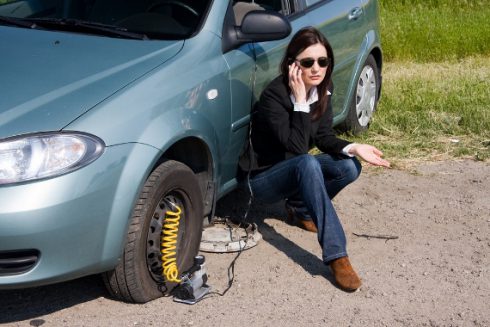The best thing to do if there’s heavy snow is to avoid going out altogether. However, driving in snow can’t always be helped. If you do have to take to the road in snowy conditions there are some simple steps to ensure you arrive at your destination safely. And if for whatever reason you do get stuck, taking the precautions we recommend will at least help you to stay safe and comfortable.
How should you prepare for driving in snow?
You need to know which the driven wheels on your car are. Front-wheel drive is usually better than rear-wheel drive in snow; four-wheel drive offers the best solution. However, in snow, a heavy four-wheel drive SUV is still likely to struggle if it doesn’t have winter tyres on. When you head out in snow, the best advice is to prepare for the worst but hope for the best. Plan your route around main roads. These are the most likely to have been gritted and weight of traffic stands a good chance of melting all but the heaviest snow falls on carriageways.
How do you prepare your car for snow?
You need to have a car that is in the best possible shape to face up to the tough conditions. See how to conduct your own winter checks here. You don’t know if you’re going to get stuck and if you do, how long you’re going to be immobile for. Make sure you’ve got plenty of fuel: if you need to spend the night in the car, it’s good to have the option to run the engine every now and again to warm yourself up (ensure the exhaust pipe is clear of snow first). And make sure you’ve got a full reservoir of screen wash, diluted so that it won’t freeze in sub-zero temperatures.
What kit should you carry in the car?
Most importantly make sure you’ve got a mobile phone with plenty of battery life in it. You should also have a blanket or warm clothes, a bottle of water and some snacks in case you get stuck in the car. Depending on where and how far you’re driving, you should be carrying a warm coat and some sturdy walking boots.
As far as kit for the car goes, a reflective jacket will ensure you’re visible and hopefully make it safer if you have to dig your car out or work on it at the roadside. A shovel is a handy thing to have for digging a car out of the snow. If it’s really freezing, a de-icer spray will help clear hard ice that may have formed beneath the layer of snow on your windows. A tow rope is simple to carry and could be indispensable in an emergency. And jump leads could be useful if your battery dies or you have to help another driver with a flat battery.
Kit check list
- Mobile phone plus charger
- Blanket and warm clothes
- Water and snacks
- Sturdy boots and a warm coat
- Reflective jacket
- Shovel
- Tow rope
- Jump leads
- De-icer spray and scraper
What must you do before driving in snow?
Visibility is key. Clear snow off all the windows and lights. You should also clear snow off the bonnet as it’ll blow back at the windscreen when you drive. And brush snow off the roof. This could either fall over the windscreen and temporarily blind you when you brake, or fly off into the windscreen of the car behind if you accelerate hard. Ensure the windows inside are free from condensation before driving.
How do you set off on snow?
Whatever manoeuvre you’re trying in the snow, less is more. If you’re trying to pull away, ramping up the revs will simply cause the wheels to spin and the car to dig in deeper. Put the car in first, or if it’s got a big engine second, use a normal amount of revs and feed in the clutch gently, slipping it so that the driving wheels take their power slowly and progressively.
How do you slow down on snow?
Remember that even a small car like a Ford Fiesta weighs around a tonne. And the heavier something is, the more distance it takes to stop. If you’re driving on snow or an icy road, anticipation is the name of the game; the Institute of Advanced Motorists (IAM) says it takes 30m to stop from 30mph in snow, compared to 12m in normal conditions. Look as far ahead as possible and if you think you’ll have to slow down, for another car or a corner, start applying the brakes very gently as you shift down through the gears.
What happens if you get into a skid?
If you go into a corner too quickly, your car might start to skid. If the car refuses to turn with the wheels (understeer), don’t brake or accelerate. Change down and wait for the front wheels to grip. If the rear swings round (oversteer), again don’t brake or accelerate but turn the steering wheel in the direction of the skid. This should prevent the car from spinning round. But ideally, you won’t be piling into a corner quickly enough for either of these things to happen. As I said before, when you’re driving in snow, less really is more, especially when it comes to safety.
 Neil Wilson is Green Flag’s head of rescue claims and motor claims response
Neil Wilson is Green Flag’s head of rescue claims and motor claims response



















